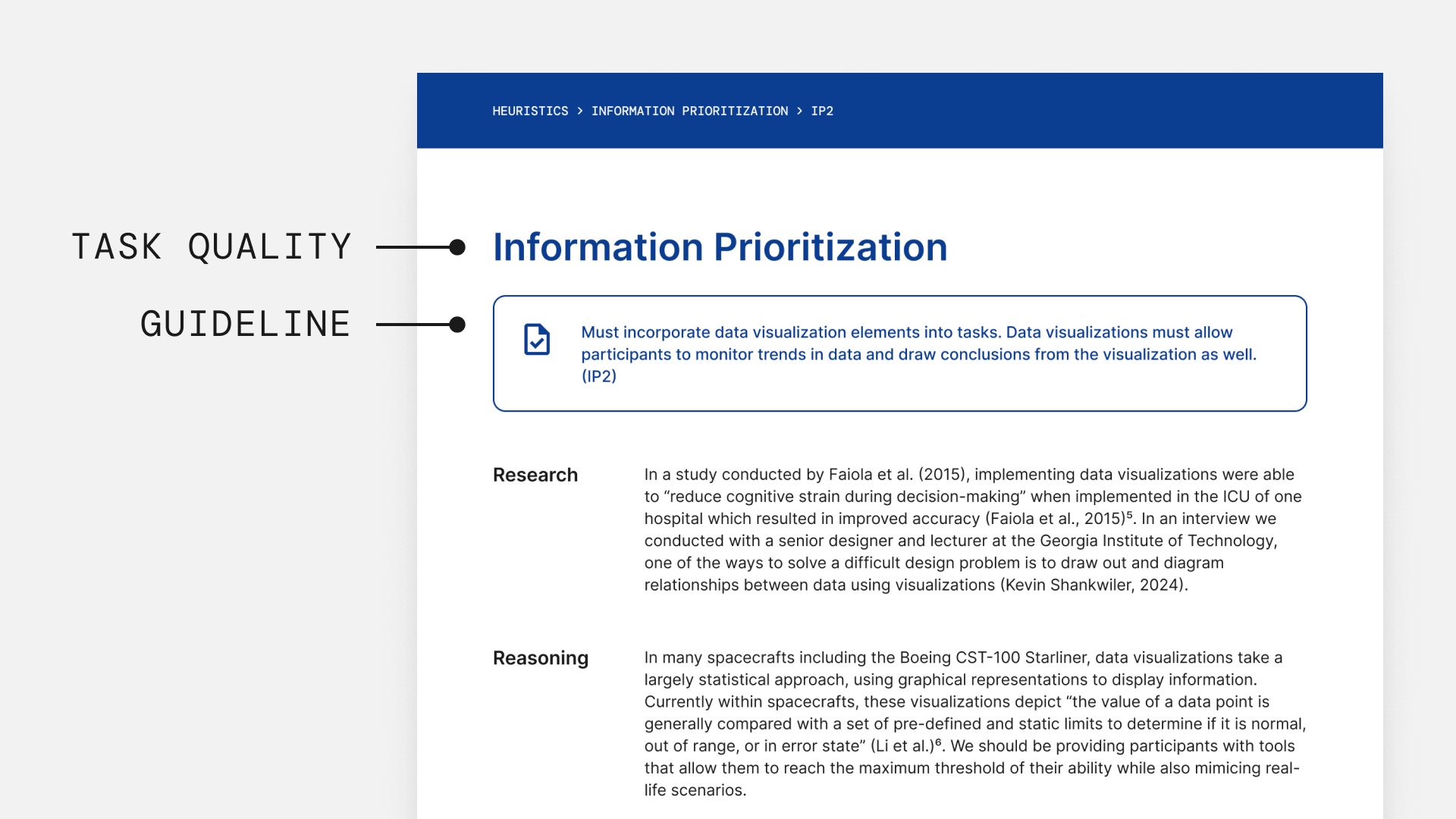Guidelines
Operationalizations of the task qualities that help researchers build tasks in greater detail
What are Guidelines?
Guidelines help define task qualities.

Where guides are located in relation to task qualities in the M.A.S.T. document
One example of guidelines would the following for Information Prioritization:
Tasks must incorporate data visualization elements. Data visualizations must allow participants to monitor trends in data and draw conclusions from the visualization as well.
In our interviews with HRP researchers, they all emphasized the importance of being able to back your claims with empirical research and reasoning. This guideline shouldn't be presented in isolation. Guidelines should be fueled by research.
List of Guidelines
Here is a list of all the guidelines in the M.A.S.T. document. For more research backing, please check out our M.A.S.T. document here ↗.
| Task Quality | Guidelines |
|---|---|
| Information Prioritization |
|
| Cascading Problems |
|
| Multiple Stressors |
|
| Induces Creative and Systematic Thinking |
|
| Built for Teams |
|